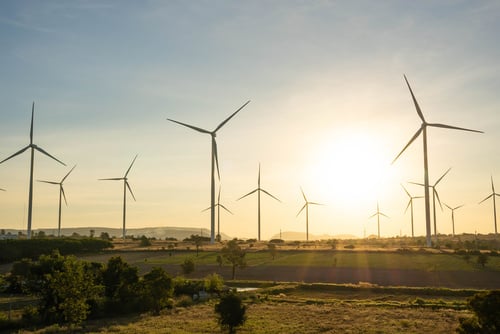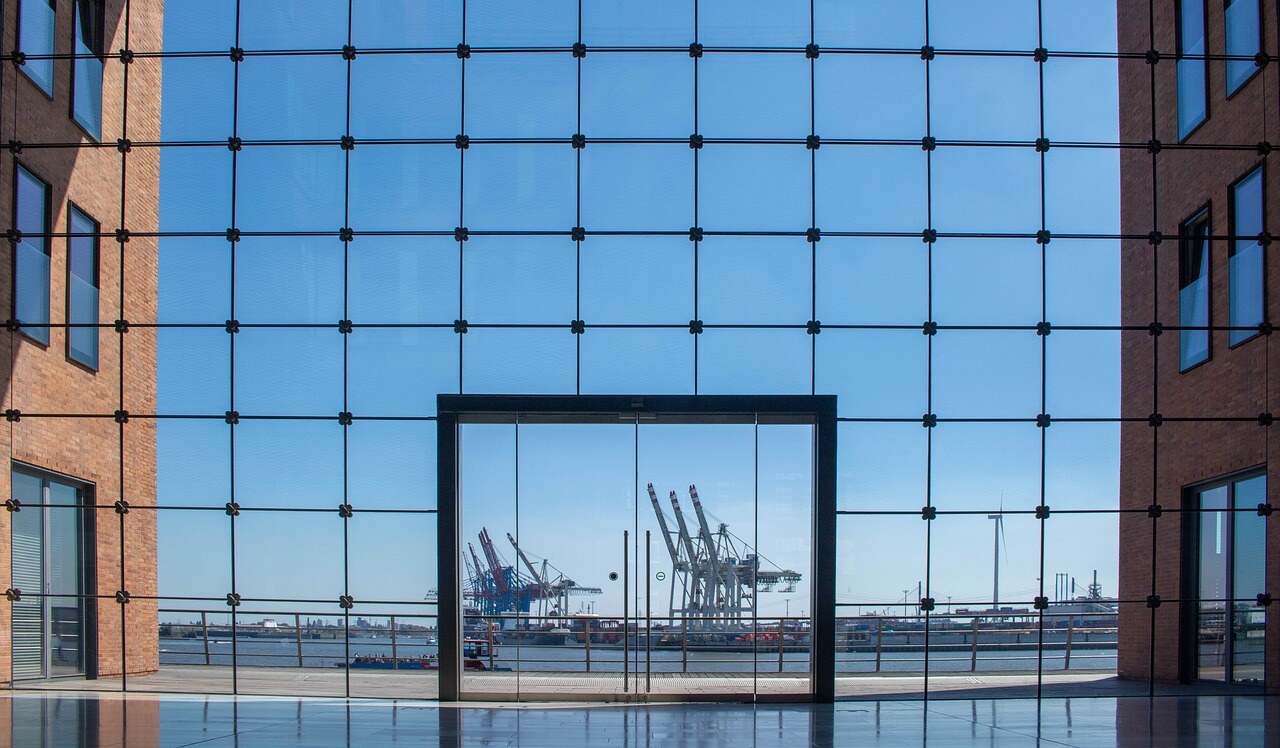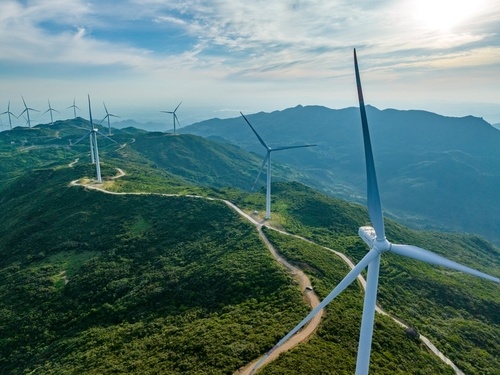Hosted by our Head of Markets, Jitesh Panchal, has broken down and analysed the factors impacting the global energy markets while highlighting some of the key fundamental drivers to monitor in the near future.
Pricing Dynamics
Last winter, Europe encountered impacts from a substantial storage overhang, mild weather leading to subdued gas demand and continued economic weakness. From Feb-24 prices embarked a significant recovery supported by strength in Asian demand and bullish supply side factors such as LNG project delays, Arctic LNG 2 uncertainties and Egypt switching to a net importer.
Over the Summer-24 period the front-seasonal UK gas and power contracts appreciated by 21% and 12% respectively. High price fluctuations are also observed in the LNG market with front-month JKM prices appreciating by 60% since the lows in February due to tightening market fundamentals coinciding with geopolitical risks and La Nina weather forecasts that could lead to heightened volatility through this winter.
The same price trend has emerged in the European market with month-ahead TTF gas price gaining 70% since February and re-anchoring above the average coal switching price, meaning that gas-fired power stations would financially underperform against most coal-fired power stations in Europe over winter driven by the prevailing coal and carbon price levels. This is simply due to expectations of higher residual demand compared to last winter and short-term marginal cost for gas and coal burn keeping at parity. Interestingly, British gas plants are at a slight cost disadvantage against Europe of €1-3/MWh over the winter which will keep the UK as a net importer from Dec-24 to Mar-25. It will also be the first winter without British coal after the decommissioning of the last plant at the end of September.
Demand
From a broader perspective global gas demand has returned to structural growth in 2024. Based on the first three quarters of this year demand grew by 2.8% vs. just 0.7% throughout 2023. Interestingly 50% of this growth was mostly observed in the first quarter of 2024 which has slowed in the second and third quarter due to price sensitive markets including South-East Asia. In contrast European demand decreased by 3% in the first three quarters of 2024 due to low gas burn in the power sector however a growth rate of 11% winter-on-winter is expected albeit below the 5-year average.
In the first three quarters of this year UK aggregate gas consumption was 5% below the same period in 2023. Whilst LDZ demand has increased by 4%, gas-for-power and industrial demand have decreased by 24% and 4% respectively due to stronger renewable output and robust nuclear generation.
UK power demand has grown 0.4% so far year-on-year and expected to increase 3.1TWh winter-on-winter based on average temperatures, with the demand recovery structurally aided by ongoing electrification of transport, heat pumps and new data centres.
Tighter market fundamentals provided upward pressure on Asian and European prices in Q3-24 with JKM keeping a $1.6/MMBtu premium over TTF prices that was driving flexible cargoes away from Europe. European LNG inflows fell by around 20% year-on-year in Q1-Q3-24 due to lower demand, high storages and stronger piped gas flows from Norway and Russia.
LNG arrivals into Europe are expected to be 3% lower this winter due to lower demand and potentially higher spot LNG procurement to Asia. However global LNG exports have been very healthy this year and mostly kept above levels observed in 2023.
Interestingly the amount of Russian LNG volumes into Europe have increased which may come as a surprise however this is due to sanctions only targeting new Russian LNG projects which in turn allow Europe to import existing LNG contracts. Moreover, a couple of months ago the EU introduced a ban on transshipment of Russian LNG cargoes to third party countries which has also contributed to higher Russian LNG imports.
Uncertainties coming from the demand side are significantly greater with temperature fluctuations remaining a key driver for gas demand. We expect a partial demand rebound on the back of more normal winter temperatures, but with considerable weather driven risk that is exaggerated by growing exposure to wind/solar load factors.
Longer range forecasts currently point to normal to mild conditions as an average over the winter season, but with risk of cold snaps developing from Nov to Jan. The NOAA currently states a 60% chance of La Nina conditions developing before November. La Nina events can weaken the Polar Vortex thus increasing the chance of Sudden Stratospheric Warming events. SSWs can lead to cold snaps, but the duration and severity of cold snaps can vary greatly. Other teleconnections, such as a positive QBO, likely solar maximum, and warm sea surface temperatures are providing the slightly mild skew to forecasts.
Supply
Europe’s renewable output increased by 15% in 2024. Great Britain saw record breaking renewable output in Q1 and 2, with renewables growing 3.8% in the year to June 2024. This trend will continue into 2025 and will likely continue to keep spark and dark spreads negative, aside from some winter contracts. Wind output remains one of the main supply risk factors for the winter ahead, as a lower wind scenario would boost more expensive fossil fuel generation, particularly in Europe.
French nuclear output increased 29TWh in 2024 after overcoming stress corrosion issues in recent years. Over winter, availability is expected to be 3GW higher YoY averaging 48.4GW, the highest level in 6 years. UK nuclear output will be hit by a flurry of planned maintenance outages over the next 2 months. Online capacity will sit at an average of 70% until mid-December but will fall closer to just 50% in late November.
The UK shut its last coal-fired power station in September. Gas-fired generation will remain the key baseload supply for GB. NBP gas and UK Carbon for fossil fuel generators currently trade at a premium to their EU equivalents and so GB gas-fired plants are expected to remain at a price disadvantage to EU plants this winter.
The NESO’s recent winter outlook put GB base case margin at a comfortable 5.2GW, an increase of 0.8GW YoY, and the largest margin since 2019/20. Interconnectors will continue to play an important role this winter, particularly during peak periods, and we expect GB will position as a net importer over the season. The IFA interconnector will see 50% of capacity offline in the last week of November for planned maintenance.
LNG imports to Europe have declined 20% YoY. This was largely driven by lower gas demand, high gas storage levels and higher Norwegian flows. European LNG arrivals will increase with winter demand and we expect the US to remain Europe’s key supplier given current parity on US LNG netbacks for both Atlantic and Pacific basin destinations.
Whilst Non-LNG gas supply into Europe expected to remain steady over winter, conditions on the global LNG market will continue to heavily influence prices. Rising Asian LNG demand is keeping Asian gas hub prices at a premium to European hubs. Weather is, again, a key risk here as colder winters in NE Asia drive LNG demand. Some Asian market participants remain price sensitive and consistently higher prices will result in some players withdrawing from the market.
Global LNG supply is set to grow by 6% in 2025 with N. American projects accounting for over 80% of this growth. The 20mtpa Plaquemines facility received a commissioning cooldown cargo in August with first exports expected in Q4. The Corpus Christie 9.5Mtpa and LNG Canada’s 14Mtpa project are due to ramp up in H1 2025. Delays have impacted some projects, most notably the 15.6Mtpa Golden Pass project has been delayed 6 months into Q1-26.
Geopolitical developments will continue to support supply risk premiums and volatility this winter. Disruptions to shipping in the Strait of Hormuz and Israeli gas production remain the key risks in this context. The Russia-Ukraine transit deal will end in Jan-25. Russia is likely to increase flows via other routes, such as Turkstream, so the full 15bcm loss may not be realised. Other options remain for flows to continue via Ukraine including swaps scenarios and spot capacity being offered at Sudzha by the Ukrainian system operator.
Transhipments of Russian LNG in European ports will be banned from Mar-25. This could result in increased imports into Europe, due to Russian tanker constraints for both Suez and North Sea routes to Asia.
Wider Markets
In the wider market Brent Oil has been highly volatile throughout the year. Over the summer period the rolling front month contract has shed around 20% and currently trades around $75/bbl.
Recent price declines are linked to a weaker demand outlook with OPEC and the IEA cutting its demand growth forecast for 2024 and 2025 for the third consecutive month highlighting that any interruption to Iran’s oil exports could be absorbed because levels of oil in storage had reached more than 1.2bn barrels and that the spare production capacity among OPEC+ countries is at historic highs.
Supply curbs by OPEC and its allies including Russia, remain in place until December when some members are scheduled to start unwinding the cuts. The Fiscal stimulus announced in China has failed to give oil prices much support indicating it will not give enough to accelerate economic growth for the world’s largest oil importer. Furthermore, a strong U.S dollar has also curbed oil price recovery which indicate interest rates may fall by a slower pace in the coming months.
Carbon
EUA carbon prices have been heavily correlated to TTF gas prices over summer and we expect this pattern to continue. Increasing renewables and a lack of regulatory drivers could keep prices relativity stable but fuel-switching dynamics present upside risk due to gas market volatility.
In the UK, we expect the new governments approach to Net Zero will support carbon prices into next year. Free allocations were marginally reduced for 2024 and 2025 recently, but the second period of free allocation quotas could be pushed back to 2027 in preparation for the introduction of a UK CBAM.






